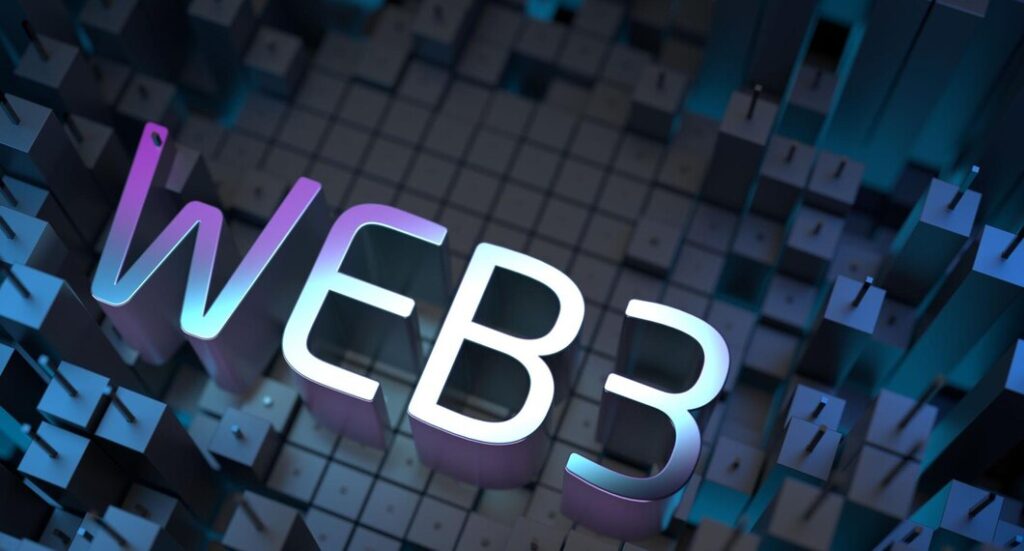The up-and-coming Technologies of Web3 will bring a range of opportunities for people and businesses.
Web1 made content readable to all. Web2 made content readable, allowing users to create, review, or edit content easily. Web3 is the new mantra for the audience and future of businesses offering formidable solutions to their lives.
Key Takeaways
- Learn About the Technologies of Web3.
- Understand the Pros of Web3 Technology.
- Get Yourself Familiar With the Cons of Web3 Technology.
- Know the Applications of Web3 with its Examples.
- Learn How Web3 Technology will Change the World.
- Know the Future of Web3 Technology. Understand What Next after Web3.
Technologies of Web3

Web3 is a platform that utilizes the features of all the future technologies, like blockchain, AR, VR, and so on, to develop decentralised applications (dApps) and enhance the user experience immensely.
Emergency Blog: Web3 Technology
Let us have a look at the technologies of Web3 here:
Infrastructural Technologies of Web3
Among the multitude of technologies leveraged in Web3, the most basic and critical are the ones used at the foundational level, i.e., the technologies that establish the whole structure of Web3. A few examples of Infrastructure Technologies are:
- Blockchain Technology: A decentralised and distributed peer-to-peer digital network that facilitates and stores online transactions in several databases, discouraging data manipulation.
- Crypto mining: It is the technology that allows the participants’ computers to solve complex math problems and earn virtual digital cryptocurrencies like Bitcoin, Ethereum, Dogecoin, etc., for verifying and authorising the transactions on their blockchain network.
- Distributed Networks: Here, a bulk of tasks can be distributed among other networks to process it fast while sharing the related information among each other easily.
- AR/VR/XR: Augmented Reality (AR) and Virtual Reality (VR) are cumulatively called Extended Reality (XR). Using eye wearables, the virtual objects will feel like real objects in 3D to our senses.
- Cumulative Computing: In this, a complex task will be broken down into simple problems and distributed to other computers in the network to solve it fast and easily.
- Non-Fungible Tokens (NFTs): These are the encrypted virtual tokens that refer to a unique digital symbol, object, asset, image, art, and so on, that can’t be replaced with something else or its copies.
- Edge Computing: This is a decentralised and distributed network to store and compute the user data near them in the local edge servers only.
Protocol-based Technologies of Web3
- Consensus-based Algorithms: In a blockchain network, a consensus-based algorithm in which all the blockchain participants agree to the present state of a distributed ledger by reaching an agreement.
- Side-Chains: This technology allows connecting a separate blockchain network with a separate consensus protocol to connect to the main blockchain network. This is done to ease out the congestion in the main blockchain while ensuring data security and privacy.
- Blockchain Virtual Machines: It is a blockchain algorithm program that mimics the processes of a computer, i.e. it has a virtual CPU, memory, and storage just like a computer and functions just like it.
Examples: Ethereum 1.0, Wanchain, Hashgraph, Ethermint, Solana, Cardano, and many more.
Utility Technologies
- Multi-Signature: This is a smart contract where the agreement of the majority of participants is a must for transacting assets from the wallet. It ensures divided ownership among the participants.
- Virtual Blockchain Wallets: A blockchain wallet is the same as a digital wallet, but it deals with cryptocurrencies, and in this, you can withdraw and encase your invested currency to store in another wallet.
- Digital Assets: It trades the unique virtual representation of any kind of physical assets, enhances its liquidity, and buys or sells them fast, with low transaction costs.
Services Technologies
- Data Feeds: It delivers live and fasts trade or transaction data among the crypto markets. Example: Cryptocurrency Data Feed.
- Off-Chain Transactions Computing: Here, the cryptocurrency transaction is moved out of the blockchain by either making an agreement among the involved parties, by having an intermediary guarantor, or by exchanging the asset with a coupon, thus, reducing transaction costs.
Pros and Cons of Web3 Technology

Pros of Web3 Technology
Let us take a look at the top 11 Benefits of using Web3 technology:
- Privacy of data by giving data control in the hands of the users.
- Enhance data security and resists censorship of free transparent information by disallowing data manipulation.
- It removes the authority of intermediaries like banks, insurance agencies, and governance institutions.
- Transparency of data transactions.
- Efficient browsing with efficacy in search results.
- Enhanced user interaction with the web world.
- Free flow of data as distributed nodes gives uninterrupted services.
- Personalised solutions to search queries.
- Beneficial to artists, creators, and advertisements and marketing industries.
- Improves work productivity.
- New and better career opportunities with the opening of new technological avenues.
Cons of Web3 Technology
As it is always good to know the negatives of any upcoming technology, let us have a look at them here:
- Web2 apps will become obsolete as non-blockchain-based gadgets and apps may have less usability.
- Tough to understand and use, i.e., other than Gen-Z kids, older generation users may find it difficult to comprehend these technologies.
- It takes away the right to be forgotten from the users, as you can’t edit data without verification by most users on the network.
- Lack of strong privacy laws and policies.
- Not environment-friendly. The multitude of electronic gadgets will increase the carbon footprint.
- Web3 technologies are not yet ready to be adopted by old-style businesses.
- Also, technological errors and user-side difficulties discourage its use in the current scenario.
- Menace of hacking, money laundering, terrorism, etc.
- The more immersive the technology, the more addictive it is. Web browsing time will skyrocket due to this.
- It could be disastrous for mental health.
- It may threaten the existence of our economy and civilisation if AI/ML-based machines take over the human mind.
Top 7 Web3 Applications with Examples
1. Metaverse Platforms
These platforms use AR/VR in business to drive their products and services in the 3D virtual world
Web3 application example: Decentraland
2. Next-generation dApps (Decentralised Apps)
These decentralised applications are for web browsing, video surfing, and so on and will run on blockchain technology.
Web3 application example: Brave Browser, Beaker Browser, DTube, and Secretum
3. Decentralised Finance
Cryptocurrency trading and investment are made on the blockchain.
Web3 application example: Uniswap
4. Advanced Gaming
The 3D gaming with life-like virtual avatars gives a feeling of reality to the audience.
Web3 application example: Axie Infinity
5. Privacy & Data Management
The applications are developed specifically to transact data in an extra highly secure environment.
Web3 application example: Everledger, Storj
6. Social Media
Decentralised and secure social networking sites with more personalised 3D worlds for more customer interaction are developed.
Web3 application example: Sola, Steemit
7. Employment Platforms
Carefully designed blockchain employment platforms are also created to open new career opportunities for employees.
Web3 application example: Ethlance
How Web3 Technology will Change the World?

The decentralisation revolution in network technologies is the best natural evolution humans could experience. Earlier, a few tech behemoths were accumulating user data and exploiting it for their growth.
Now everyone can earn virtual currency and share profits to verify the authenticity of transactions online. The data control will come back to the hand of the user. The feature of interoperability between platforms will bring a completive environment to the mega-giant companies.
The decentralised blockchains are going to strengthen digital property rights. On the other hand, it will open up endless job opportunities, and that too remote work.
In a way, Web3 will affect the lives of everyone on the internet. We must prepare ourselves to smoothly transition from Web2 to Web3 soon enough.
Future of Web3 Technology: Next what?
The major radical opportunities that Web3 must delve into more for the benefit of humanity are in climate change prevention and mitigation.
Metaverse in Web3 is posing the hope for path-breaking discoveries in the field of prior detection and treatment of diseases like Cancer, HIV and genetic diseases.
Web3 will become the basic internet need for everyone and is showing more avenues to bring Web4, which may bring technologies like wireless high-speed internet applications and gadgets for common users.
Web3 use in space applications will help scientists to make more fascinating discoveries that will bring solutions to problems that the human race faces..
Conclusion
This transformative platform is definitely here to stay as an essential part of our lives and will bring about groundbreaking changes in how companies and governments function.
Let us keep an eye on the new capabilities it offers to bring into our day-to-day work and leverage the trends of its technologies and their mesmerising applications.
Feeling awe-struck and resolute to learn all the technologies of Web3? Join Teachnook’s courses on various Technologies of Web3, which will help deepen your understanding and make your career future-ready.
Frequently Asked Questions (FAQs)
People Also Ask
What language will Web3 use?
Solidity, C++, Java, Vyper, and HTML are some of the languages used in Web3.
Is Web3 an IoT?
Web3 itself is not an IoT but has applications in developing IoT devices that are blockchain-based, decentralised, customer-driven, and are more secure.
What skills are needed for Web3?
The most important skills needed to develop Web3-based applications are
1. To have a deep understanding of its involved technologies, like AR/VR, Cryptocurrencies, and so on.
2. You need a profound knowledge of cybersecurity and privacy policies.
3. The fundamentals of blockchain must be strong.
4. Soft skills and an ethical understanding of the nitty-gritty involved in the metaverse and AI-based device applications must be present in a Web3 developer.



